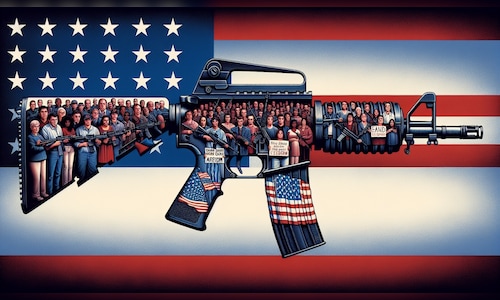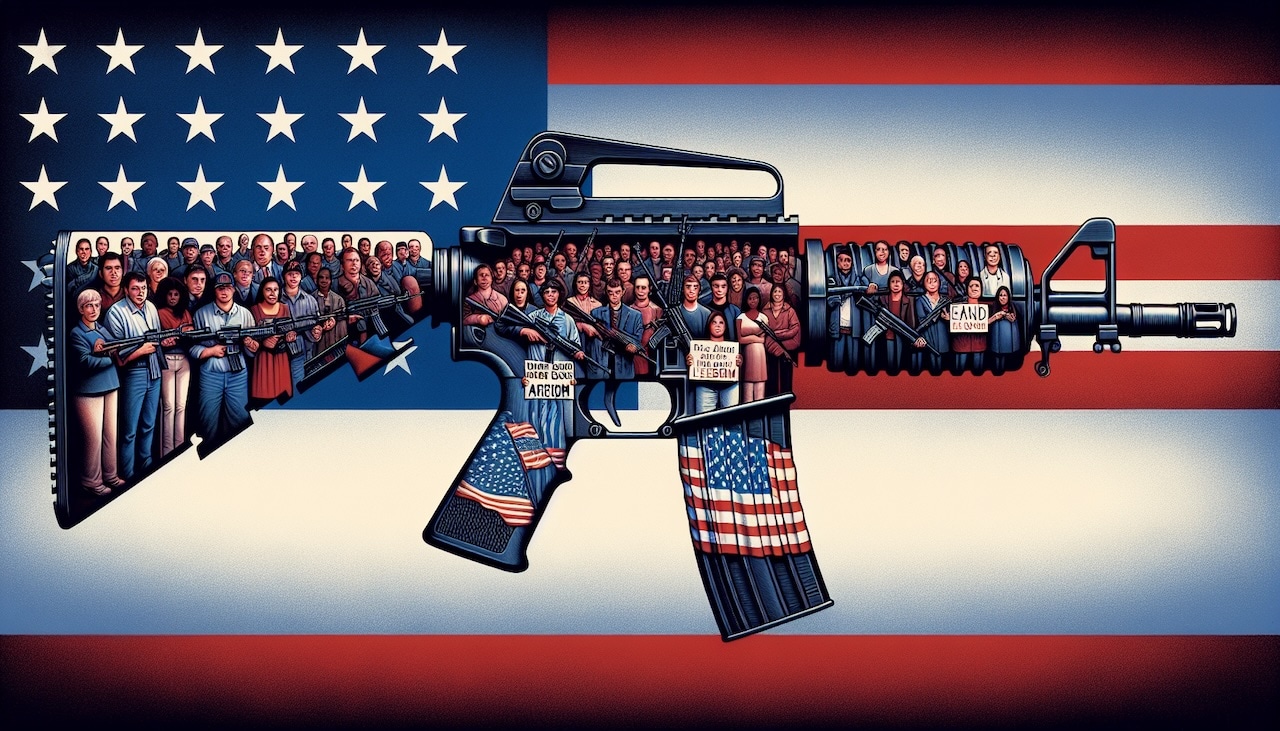

The debate over gun control has been a contentious one that has shaped American identity, politics, and daily life for centuries. The issue of gun control is not just a matter of policy — it has been shaped by historical perspective, varying interpretations of the Constitution and the consequent beliefs about freedom and personal security.
The Second Amendment: A Principle or Misinterpretation?
At the heart of America’s gun culture is the Second Amendment to the United States Constitution:
“A well regulated Militia [sic], being necessary to the security of a free State, the right of the people to keep and bear Arms, shall not be infringed.”
For aeons, these 27 words have sparked fierce debate and too many legal battles to count. For those in favour of protecting gun ownership at all costs, the Second Amendment is inviolable and provides a fundamental right as essential as freedom of speech. For those opposed, however, the meaning has been grossly interpreted: they say the phrase “well regulated Militia”, means that civilians are expected to bear arms only in times of conflict and that it does not give every citizen a right to purchase and own firearms.
The Second Amendment was ratified in 1791, a time when muskets were the primary firearms. Today, the debate centres on whether America’s “Founding Fathers” — the men who signed the Declaration of Independence from the British — could have envisioned modern semi-automatic weapons.
In American culture, firearms have been long romanticised in pop culture, with the deluge of Western movies in the 1960s and 1970s to the action hero era in the 1980s and their ilk. Guns have always been an integral part of the American fabric, which has arguably become threadbare over time.
The Current State of Gun Control
Despite the heated rhetoric, the United States does have a measure of gun control legislation in place. Complicating the issue is the dual nature of governance in the US — there are state laws, and then there are federal laws.
Local laws vary significantly from state to state, creating a patchwork of regulations across the US.
Key Federal Laws
- The National Firearms Act (1934)
- The Gun Control Act (1968)
- The Brady Handgun Violence Prevention Act (1993)
New Legislation Coming into Effect on January 1, 2025:
California: Limiting handgun purchases, mandating firearm risk pamphlets, and expanding gun violence restraining orders.
Colorado: Handguns in unoccupied vehicles must be securely stored. From July 2025, concealed-carry (licence to conceal a firearm) applicants must complete an eight-hour training course, including a live-fire test, with restrictions on those with recent convictions.
New Hampshire: Expanded gun rights protecting privacy in gun purchases and allowing employees to store guns in locked vehicles. A proposed mental health reporting bill for background checks failed in the state senate.
Kentucky: An NRA-backed ban on merchant category codes for gun retailers joins similar legislation in other states.
Other States: Minnesota bans binary triggers and extends Safe School Zone laws to university campuses; New York requires gun dealers to post firearm risk warnings from January 7 and launches a registry for extreme risk protection orders.
Yet, according to many, these laws are woefully insufficient. As per current data available with the Gun Violence Archive, an American nonprofit group which catalogues every incident of gun violence in the United States:
- The US has 120.5 guns per 100 residents — the highest worldwide.
- In 2021, the US witnessed 45,222 gun-related deaths, both murder and suicide
- There were 488 gun-related incidents in the US in 2024, with the past four years accounting for 600 incidents per year on average.
- Mass shootings have increased by 33% from 2019 to 2020. Mass shootings are defined as gun-violence incidents in which four or more people are injured or killed.
The problem is further compounded by the increasing use of 3D-printed firearms. Most recently, Luige Mangione, who is accused of murdering UnitedHealthcare CEO Brian Thompson in New York, reportedly used a 3D-printed handgun.
In September 2024, US President Joe Biden signed an executive order cracking down on “unserialized [sic], 3D-printed guns and machine gun conversion devices”.
The Powerful Gun Lobby
No discussion of American gun culture is complete without mentioning the all-powerful gun lobby, which is primarily represented by the five-million-strong National Rifle Association (NRA). With countless millions of dollars in its war chest, the NRA has been at the forefront of shaping gun policy in the US.
- In 2020, gun rights groups spent $15.8 million on lobbying efforts.
- The NRA alone has spent over $250 million on political activities since 1998.
- The lobby’s financial clout gives it access to legislators and political capital.
In a recent interview with USA TODAY, John Commerford, Interim Executive Director of the NRA Institute for Legislative Action (NRA-ILA), celebrated the election of a “pro-gun president” in Donald Trump and Republican majorities in Congress. He stated, “Much to the dismay of gun control activists, Second Amendment rights were protected and expanded in a number of states in 2024.”
Public Opinion: A Nation Divided
Despite the gun lobby’s influence, public opinion on gun control remains sharply divided. According to a recent Gallup poll:
- 52% of Americans want more stringent gun control laws.
- 35% believe that current laws are sufficient.
- 11% want laws that are less strict.
A Global Perspective
America’s gun laws and rate of ownership are markedly different from other countries around the globe.
- In India, under the Arms Act of 1959, guns are issued only for three purposes: self-defence, crop protection, and sports. The law requires sufficient proof for those citing self-defence while applying for a gun permit.
- Australia passed strict gun control legislation after a mass shooting in 1996. This has led to a significant drop in gun-related deaths in the country.
- Japan has some of the world’s tightest gun laws, with only 0.3 guns per 100 people.
- The United Kingdom banned handguns in 1997.
Proposed Solutions
While the debate rages, stakeholders on both sides have proposed several measures.
- Universal Background Checks: Plugging existing legal loopholes to ensure everyone purchasing a gun is subjected to a background check.
- Assault Weapon Bans: Certain types of firearms often used in mass shootings must be banned.
- Gun Buyback Programmes: The government could start initiatives to purchase firearms from willing citizens — a move aimed at reducing the number of guns in the wild.
- Smart Gun Technology: Developing ‘smart’ firearms that only recognise their registered owners, using some form of biometrics.
The Road Ahead
America’s relationship with guns is complex and deeply rooted. Any administration that seeks to make a significant change faces the immense challenge of straddling ideological fences and finding common ground. This feat is easier said than done, considering how several administrations have tried and failed.
Also read: Gunman who killed at least 12 people in shooting rampage in Montenegro dies by suicide



